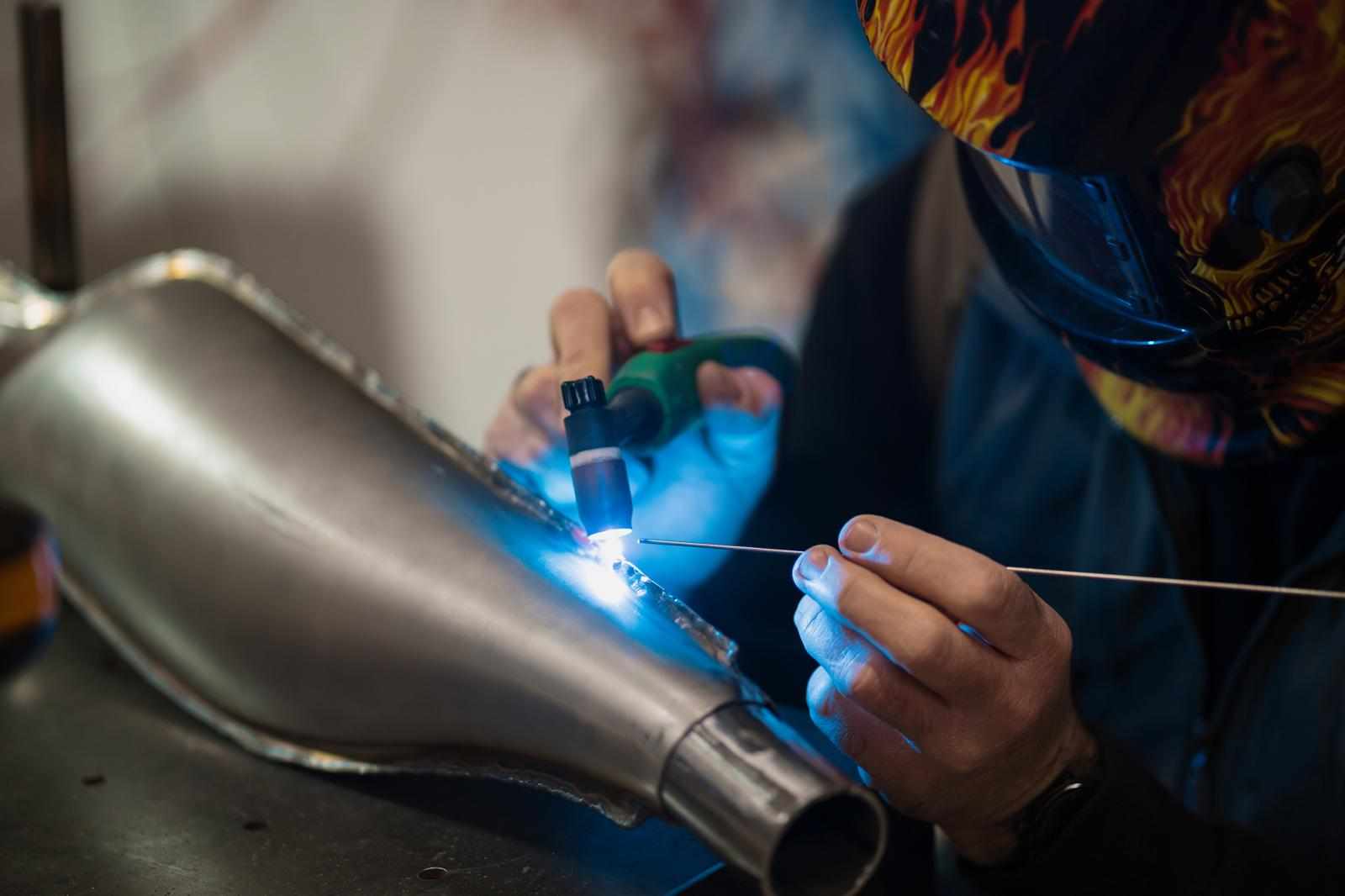Der Markt für Flughafensicherheit: Trends, Wachstum und Chancen
Einleitung

Einleitung


Introduction


서론


Introducción


はじめに


IntroductionWith increasing international travel and evolving security threats today, airport security is a leading sector in the entire aviation and homeland security industry today. It's not a luxury anymore to protect travelers, flight crews, and airport personnel but mission-critical. Governments and airports globally continue to invest in state-of-the-art technologies to protect against the threat of terrorism to cyberattack, making this a fast-paced and accelerating market.The Airport Security Market is expected to register a CAGR of 8.5% from 2025 to 2031


クエン酸のカルシウム塩であるクエン酸カルシウムは、優れたバイオアベイラビリティと穏やかな吸収性から、栄養補助食品や強化剤として非常に人気が高まっています。他のカルシウム化合物とは異なり、胃酸を必要とせず吸収されるため、消化器疾患や胃酸分泌量の低下に悩む人にとって最適な選択肢となります。


El citrato de calcio, una sal de calcio del ácido cítrico, se ha vuelto muy popular como suplemento dietético y agente fortificante debido a su excelente biodisponibilidad y fácil absorción. A diferencia de otros compuestos de calcio, no necesita ácido gástrico para absorberse, lo que lo convierte en una opción ideal para personas con trastornos digestivos o baja producción de ácido gástrico.


구연산의 칼슘염인 구연산칼슘은 뛰어난 생체이용률과 순한 흡수율로 인해 건강 보조 식품 및 영양 강화제로 큰 인기를 얻고 있습니다. 다른 칼슘 화합물과 달리 위산의 흡수를 필요로 하지 않아 소화 장애나 위산 생성 감소로 고통받는 사람들에게 완벽한 선택입니다.


Le citrate de calcium, un sel calcique de l'acide citrique, est devenu très populaire comme complément alimentaire et agent fortifiant grâce à son excellente biodisponibilité et à sa faible absorption. Contrairement à d'autres composés calciques, il ne nécessite pas d'acide gastrique pour être absorbé, ce qui en fait une option idéale pour les personnes souffrant de troubles digestifs ou d'une faible production d'acide gastrique.


Calciumcitrat, ein Calciumsalz der Zitronensäure, erfreut sich aufgrund seiner hervorragenden Bioverfügbarkeit und seiner milden Resorption als Nahrungsergänzungsmittel und Stärkungsmittel großer Beliebtheit. Im Gegensatz zu anderen Calciumverbindungen benötigt es keine Magensäure zur Aufnahme und ist daher ideal für Menschen mit Verdauungsstörungen oder einer geringen Magensäureproduktion.


Calcium citrate, a calcium salt of citric acid, has become very popular as a dietary supplement and fortifying agent because of its excellent bioavailability and mild absorption nature. Unlike other calcium compounds, it does not need stomach acid to be absorbed, which makes it a perfect option for people suffering from digestive disorders or low production of stomach acid.Key Market Segments1. Pharmaceuticalsit is widely utilized in pharmaceuticals because of its high bioavailability and mild action on the stomach. It is used as a calcium supplement and is added to antacids and excipients.



The ancient process of electroplating, in which a thin coat of another metal is plated onto a metal object using electric current, has remained an essential part of various industries. From automobile and electronics to jewelry and aircraft, the process adds corrosion resistance, beauty, and conductivity. As industries continue to seek higher finish and durability, the global market for electroplating continues to expand and develop.Key Growth Strategies:1. Technological InnovationAdvanced electroplating has replaced old chromium and nickel plating. Firms are investing in pulse electroplating and nanotechnology, which provide greater control over coating thickness, uniformity, and adhesion. These technologies not only result in better product quality but also lower operational cost and waste.2. Sustainability & Green ChemistryIn light of increasingly stringent environmental legislation, particularly in Europe and North America, the market is moving towards ecologically friendly plating solutions. These advances consist of cyanide-free plating, hexavalent chromium alternatives, and closed-loop wastewater treatment to reduce environmental footprints.3. Strategic Alliances and AcquisitionOrganizations are collaborating with chemical suppliers, equipment makers, and end-users to streamline supply chains and provide integrated solutions. Mergers and acquisitions are also helping organizations grow regionally and broaden service offerings.4. Specialization and CustomizationIn order to serve niche markets like aerospace or medical devices, electroplating suppliers are providing value-added coatings that satisfy specific biocompatibility, wear, and conductivity specifications. These specialty services have high margins and long-term agreements.Future Scope:1. Growth in Electric Vehicles (EVs)As EVs gain popularity, there will be a rising demand for electroplated items like battery connectors, bus bars, and control units. Electroplating ensures that such items have high conductivity and corrosion-resistant capabilities.2. Convergence with Additive ManufacturingElectroplating and 3D printing are converging more and more. Additive manufactured metal parts are getting electroplated to enhance strength and surface finish. All this is opening up new avenues in aerospace, defense, and biomedical fields.3. Microscale ElectroplatingAs the electronics industry shifts towards smaller components, particularly in smartphones and wearables, micro electroplating is increasingly becoming popular. It enables thin coatings on microcircuits and connectors, which are critical for performance and longevity.4. Circular Economy and RecyclingIn an effort to cut down on the use of virgin metals, the industry is also looking into electroplating as a way of recycling already utilized parts, particularly in the industrial and automotive sectors. This aligns with international sustainability objectives and provides cost-effective avenues to manufacturers.Opportunities:1. Medical Device CoatingsWith the healthcare field expanding, also expands the need for corrosion and biocompatibility on devices such as pacemakers, implants, and medical devices. A high-margin, high-regulation, premium business.2. Decorative Finishing in Consumer GoodsElectroplating isn't merely functional--it's attractive, too. Watch, high-end, and consumer appliance industries are tapping into electroplating to provide bright-gloss gold, silver, or bronze coatings. Behind this is pressure coming from emerging economies for high-quality consumer products.3. Aerospace ApplicationsStringent conditions within aviation require light but extremely resistant coatings. Electroplating of aircraft parts with cadmium, nickel alloys, and titanium provides wear resistance, thus a high-value opportunity for specialist players.4. Urban Building and InfrastructureModernization of infrastructure, particularly within developing economies, is creating opportunities for corrosion-resistant coatings on structural steel. Electroplating increases the lifespan of buildings, bridges, and railway networks segments with gigantic growth prospects.Key Segments:1. By Metal Type• Nickel: Used extensively due to wear and corrosion protection.• Zinc: Most in demand due to cost-effectiveness and sacrificial protection.• Gold and Silver: Employed in electronics, high-end products, and medical equipment for conductivity and appearance.• Copper: Domination in the electronics industry due to improved conductivity.• Chromium: Best employed for hard plating in automobiles and industrial machinery.2. End-Use Industry• Automotive: Dominates with the largest share because of corrosion and decorative finish demand.•Electronics: Strong growth due to smartphones, semiconductors, and printed circuit boards.•Jewelry and Consumer Goods: Consistent demand for cosmetic coatings.•Industrial Machinery: Needs heavy-duty coatings to support harsh conditions.•Medical and Aerospace: Specialty but high-value uses with rigorous regulation requirements.3. By Region•Asia-Pacific: Dominating the market with more than 40% share, fueled by Chinese and Indian manufacturing leadership.• North America: Highly technologically advanced with aerospace and defense industry demand.• Europe: Green chemistry and regulation emphasis are changing product lines.• Middle East & Africa: Developing economies with growing demand for construction and consumer goods electroplating.Conclusion:The electroplating industry is undergoing a dynamic makeover, aligning old strengths with new imperatives for precision, sustainability, and customization. With technological advances and increasing uses in various industries, the industry is set to expand further. Strategic innovation, green business, and high-growth niche market focus will be the distinguishing factors in the next couple of years.



IntroductionCompressed Natural Gas (CNG) cars run on pressurized natural gas as a greener fuel in place of petrol and diesel. CNG car adoption is gathering pace globally on the back of falling greenhouse gas emissions, lessening oil import reliance, and curbing city air pollution. The Indian CNG car market is growing well, with sales set to rise to 1.1 million units in FY25 from 940,000 units in FY24.


As the world keeps changing in the digital environment, digital signage has proved to be a successful medium for delivering content and engaging audiences across various industries. Behind every successful digital signage solution lies the digital signage media player, the core piece of hardware that distributes content to displays in real-time. As companies increasingly rely on technology to advertise, educate, and engage with customers.


The global market for drilling machines is witnessing a high rate of transformation due to rising industrialization, infrastructure development, and emerging technologies. Drilling machines find uses in construction and automobile manufacturing, oil prospecting, and renewable energy schemes. The market for accurate, efficient, and automated drilling equipment is growing across all these sectors.


The market for safety helmets has seen consistent growth in recent years, led by growing awareness of workplace safety, escalated construction activities, and the increased requirement for protective equipment across industries. With workplace safety emerging as a concern of greater importance in industries like construction, manufacturing, mining, and sports, the need for superior quality has escalated.


Introduction:


Introduction:Tow tractors, also known as tuggers, are industrial trucks that are required to transport heavy loads over short distances, primarily within warehouses, factories, airports, and seaports. The equipment is designed to tow carts or trailers rather than transporting loads onboard and enhance the operational efficiency by reducing material handling complexity.Growth Drivers:E-commerce ExpansionThe rapid expansion of e-commerce has created the need for efficient logistics and distribution networks. With more shopping done online, the need for fast and secure transportation of products between warehouses and distribution centers has become imperative.Infrastructure DevelopmentThe expansion of ports, airports, and logistics hubs necessitates the use of efficient material handling equipment and are essential to managing the flow of goods within these hubs, enabling the growth of global trade and logistics.Technological AdvancesTechnologies such as AI systems and telematics are enhancing the capabilities of tow tractors. These technologies make them safer, more efficient, and simpler to manage as fleets.Regional Analysis:North AmericaTrends: Growing application of electric and autonomous tow tractors to meet environmental regulations and enhance operating efficiency.Challenges: Large capital investment costs and competition from other material handling solutions.Outlook: Continued leadership due to continued investment in infrastructure and technology.Asia-PacificMarket Dynamics: Industrialization, urbanization, and expansion in infrastructure are stimulating market growth.Key Markets: China, India, Japan, and South Korea.Adoption Trends: Growing demand for electric and autonomous as a part of modernization plansEuropeFocus Areas: Environmental sustainability and technological innovation.Key Countries: United Kingdom, France, Netherlands, and Germany.Adoption Trends: Strong adoption of hybrid and electric tow tractors to ensure stringent emissions standards.Market Outlook: Consistent growth owing to technological advancement and regulatory support.Latin AmericaKey Markets: Brazil and Mexico.Adoption Trends: Growing demand for both conventional and to boost operational efficiency and sustainability.Challenges: Economic uncertainty and varying regulatory practices across countries.Middle East & AfricaMarket Characteristics: Robust growth underpinning infrastructure development and growing trade activity.Key Areas: Enhancing logistics infrastructure and operational efficiency.Adoption Trends: Demand for new and legacy technologies, including electric and autonomous.Challenges: Bypassing regulatory challenges and varying market conditions across the countries.Opportunities:Electrification & Green TechnologyWith industries moving toward carbon neutrality, electric provide a greener, quieter, and more energy efficient solution to their diesel counterparts. Companies investing in battery technology, quick-charging infrastructure, and zero-emission options are likely to thrive.Autonomous and Smart VehiclesThe advent of Industry 4.0 has brought opportunities for autonomous vehicles enabled with AI, GPS, and sensor-based directions. These reduce labor expenses, enhance safety, and provide around-the-clock efficiency for warehouses and logistics centers.Warehouse & Distribution Center ExpansionThe global e-commerce and on-demand delivery surge is fueling the construction and robotics of new fulfillment centers. This is creating tremendous demand for tow tractors to automate material handling, optimize order picking, and reduce turnaround time.Future Trends:Widespread AdoptionPurged by stringent emissions standards and a global focus on green technologies, Advances in battery tech like lithium-ion and solid-state batteries will make possible longer runtime, faster charging, and less maintenance costs.Autonomous & Smart Navigation SystemsThe synergies of AI, sensors, and IoT are ushering in total autonomy. Such autonomous equipment is ideal for repeated paths inside warehouses and factories, reducing labor costs and reducing human error.Cross-Sector ApplicationsWhile previously used in manufacturing and logistics, increasingly used in the aviation industry, as well as in healthcare and even urban mobility for last-mile usage in controlled environments.Conclusion:The tow tractor market is experiencing a revolutionary shift, fueled by the explosive growth of e-commerce, technological innovation, and worldwide movement towards sustainability. As the world moves towards reducing carbon footprints and streamlining operations, electric and autonomous are becoming material handling game-changers.


Introduction:
